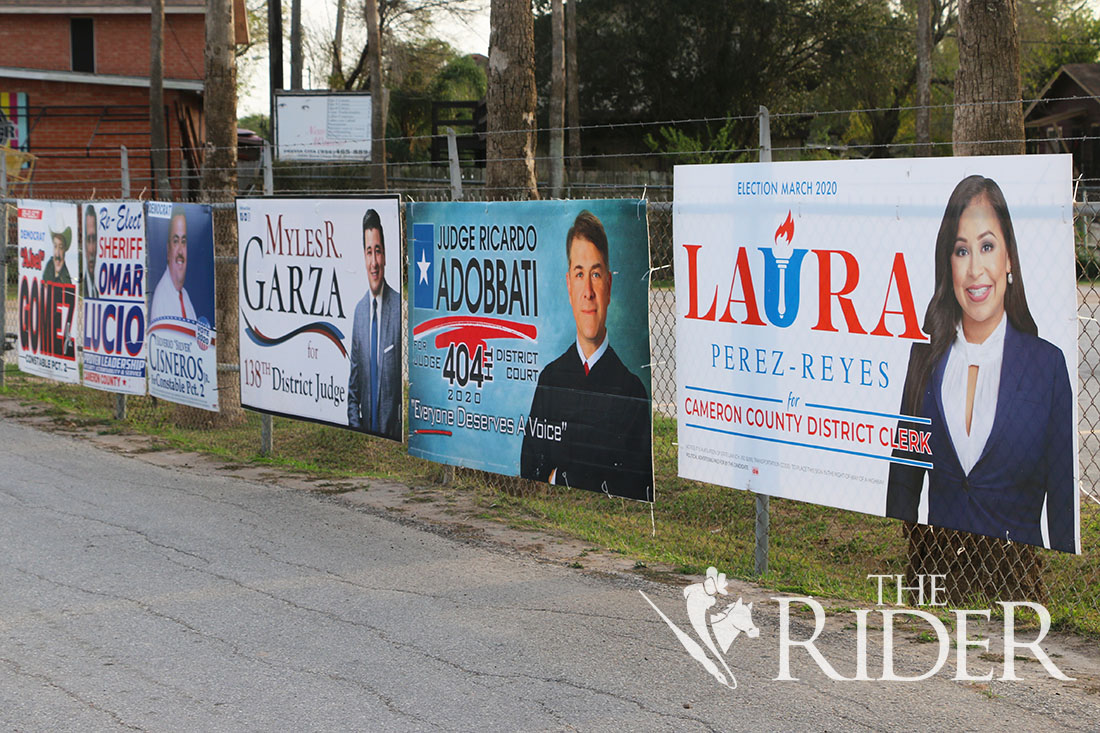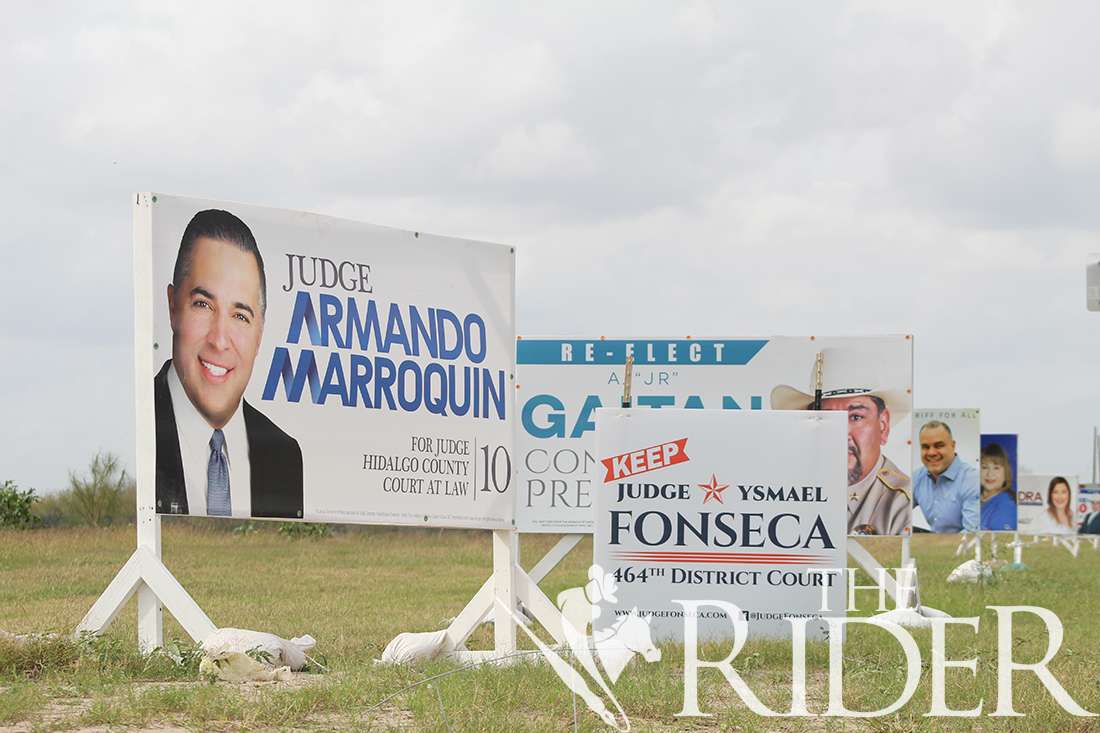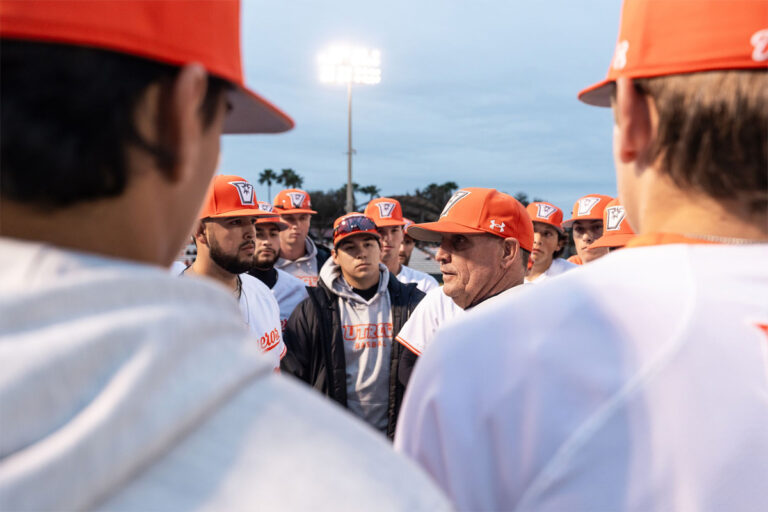
A UTRGV political science assistant professor sees similarities between the March 3 primary election results and those in 2016.
Charles Olney said that at the presidential level, results were surprising compared to a week ago.
“[Democratic presidential hopeful] Joe Biden was pretty successful in a lot of states,” Olney said. “He was looking in, like, third or fourth place even a week or so ago. So, from that perspective, it is pretty surprising. But, if you went back in time two months and said, ‘This is what will happen on Super Tuesday,’ I don’t think it would have been at all surprising. So it’s really just, we’ve had a lot of ups and downs over the past month or so.”
He said this year’s primary elections looked a lot like the 2016 race in the sense that the coalition of African Americans in the South and women that were supporting Hillary Clinton seemed to back Biden.
Daniel Chomsky, a political science associate professor, said it is not much of a surprise to see Biden win so many states on Super Tuesday, when looking at the race’s overall picture.
“Once the other candidates pulled out, support from the kind of … more conservative wing of the Democratic Party, coalesced around Biden,” Chomsky said. “And that, you know, is a function of the incredible kind of media and elite opposition to [Democratic presidential hopeful Bernie] Sanders and the Sanders Campaign combined.”
He said there is a fear of Sanders within the establishment of the Democratic party which is what led to media attacks and the support developing around a non-Sanders alternative.
“So with elite support with media … corporate support finally coalescing around Biden,” Chomsky said. “[It] looks like Biden is going to win, but it isn’t going to be easy. It’s not all going to fall into place for him.”
He said Biden is a lackluster candidate and has a track record of being a poor campaigner.
“He’s got a kind of, you know, really glaring shortcomings as a candidate, and Sanders has some real level of support … the policies, the positions he’s staked out, resonate with, you know, the substantial population,” Chomsky said.
He said delegate counts are fairly equal and it looks like it will be a close race between Bernie and Biden, and Biden will get the nomination with all the support around him.
For the Republican Party primary, Chomsky said President Donald Trump made it impossible to run against him within the party.
“It is rare that an incumbent candidate from the party faces serious competition within the party, but what’s happened in the Republican Party is that Trump is, you know, in some regards … completely absorbed the party,” he said.
At the local level, in Cameron County, Olney said results were what he expected, such as the state Senate race, in which incumbent Eddie Lucio Jr. faced two Democratic challengers, Sara Stapleton Barrera and Ruben Cortez.
“I definitely anticipated he would come in first of the candidates,” he said. “I thought there was a decent chance it might go into a runoff and it seems like that’s what is going to happen.”
Lucio, who garnered only 49.78% of the vote, and Barrera, who captured 35.6%, will be in a runoff election May 26. The winner will face Republican challenger Vanessa Tijerina on Nov. 3.
Olney said it seemed as if incumbent candidates, or those with resources, were able to “stake their claim” in first place.
“In terms of how Cameron County and, sort of, the [Rio Grande] Valley voted … at the state level and the national level it’s probably about what we would have expected,” he said. “Sanders ran pretty strong here, but there was a big constituency for Biden and for [former Democratic presidential hopeful Michael] Bloomberg as well. For the state-level offices, generally, the Valley was probably a little bit more left than what you would expect Texas, as a whole Democrats to be, but it’s relatively in line with where the rest of the state was voting.”
Chomsky said he will be voting in his home state of Pennsylvania but did keep an eye on some local elections.
He said he noticed the Jessica Cisneros Campaign for Democratic nomination for U.S representative for District 28 against longtime incumbent Henry Cuellar, looked similar to the Sanders campaign.
“[Cisneros] … kind of almost made up the difference and that speaks to a degree of mobilization in the population, you know, a demand for progressive policies,” Chomsky said. “It was a hopeful sign, and of course, discouraging because she didn’t quite make it.”
Asked why he thought Texas remains a red state, Olney replied that it has been a conservative state for a long time.
“Over the course of the ’60s, ’70s and ’80s, the realignment that took place across all of American politics happened very strongly in Texas as well and, so, by the time you got to the ’90s and the 2000s, there was a pretty strong conservative constituency,” he said. “A lot of, kind of, urban, suburban and exurban white voters moved pretty heavily toward the Republican Party and that was sufficient to control Texas.”
However, Olney said demographic changes, such as immigration and new population growth in the Rio Grande Valley, Houston, Austin, San Antonio and El Paso, have reversed the trend a little.
“I think everything is still on track for over the next 10 years,” he said. “We might anticipate that Texas becomes a genuine, sort of, purple state that goes back and forth on elections. I don’t see any strong reason to think that will happen this November, but it’s not out of the realm of possibility.”
Olney believes Trump is not especially popular and various Democratic candidates run reasonably well against him.
“But, as we saw in 2016, you can win by a point or two in terms of actual votes and then not win the Electoral College,” he said. “And the thing that, in many ways … Sanders and Biden have both tried to make an appeal to, is that they would be the candidate who would, sort of, reallocate that math a little bit.”
The assistant professor said the fact that Biden was more successful in states such as Minnesota is perhaps an argument in his favor that he might be able to garner more votes in states such as Michigan, Wisconsin or Pennsylvania. But, he strongly discourages drawing too many conclusions.
Olney said because the population is growing, turnout is expected to grow, too.
He said there is a block of theoretically available votes in the Rio Grande Valley that candidates generally have not done much to get ahold of.
“You invest all your resources in Pennsylvania or Florida,” Olney said. “You don’t invest them in Texas or California, but if Texas is now, maybe, on the horizon as a winnable state, the South Texas area is the place that has the biggest room to grow because turnout rates are very low.”
He noticed Biden had a successful day on March 3, despite having almost “no money and no real campaign offices.” He said campaign effects are pretty marginal.
Olney said many times, money spent does not necessarily translate into votes all that well.
“The reality is that in the modern economy, what’s on the national news, you know, earned media as we call it … is oftentimes a lot more valuable than any directed resources you can put towards,” he said. “So, putting up signs, calling people, those kinds of things … those make a difference but they’re a pretty marginal effect compared to what’s just going on in the national political discourse.”
Zak Borja, a political science junior, voluntarily handed out refreshments to voters in line Tuesday in the Student Union on the Edinburg campus, where polling lines stretched across the building.
Borja said he was disappointed to see that many people voting so late, when early voting went on for a week.
“I know people work full time,” he said. “I know it’s really hard.”
Asked about what possible solutions there could be to shorten lines on Election Day, Borja replied, to make primary and Election Days a national holiday.
“I know there’s certain proposals … [where] everybody gets time off from work to go and do their civic duty of voting,” Borja said. “Most people can’t go out and vote, especially times like this, until maybe five or six o’clock when the lines are extremely, stupidly long.”






